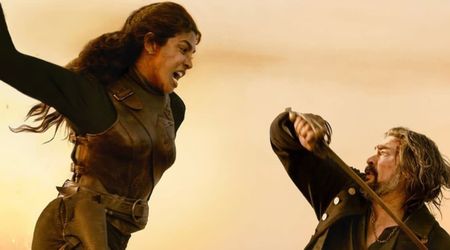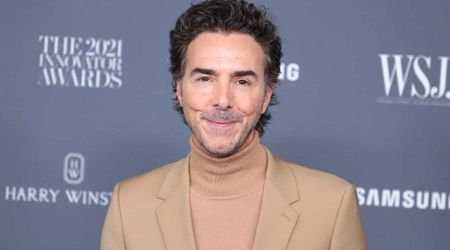Creator Joe Pokaski, writer Matthew Federman, actor Stana Katic say diverse writers' rooms can create stronger characters

Diverse writers' rooms are the need of the hour and a look at one of the biggest television shows - 'Game of Thrones' - finale season should be reason enough for production networks and streaming sites to give a second thought on the diversity or lack thereof in a writers' room. For a while now, we have heard in interviews that Hollywood is all for a diverse writers' room, but how far has this translated to the content that has originated?
How many shows or films that we see today portray nuanced characters of different genders, race, sexuality or cultural background? While not all female writers can produce exceptional female characters and not all queer writers can flesh out queer characters to perfection, there is a nuance that only they can bring to a character. A diverse writers' room helps gain nuanced characters that go beneath the surface. It is not just broad strokes and allusions but ones that become powerful because of the tiny details that can only be brought to the table with the inclusion of writers of all genders, race, sexual orientation, and culture.
For instance, when Sophie Turner's character Sansa Stark in 'Game of Thrones' says "Without Littlefinger, Ramsay and the rest... I would have stayed a little bird all my life," to Sandor Clegane played by Rory McCann, it left me personally with a sense of disappointment.
Does that mean women have to go through abuse to mature as human beings? This is not what you want victims of abuse seeing on their television screens. And here's the thing! When Turner spoke about the dialogue and defended it in an interview with the New York Times, she said the dialogue was not intended to mean that Sansa's crediting her abusers for who she became. The nuance required here is to bring Sansa's resilience to fore, not the individuals who abused her, which the dialogue ended up doing.
This is sloppy writing, said many fans and critics but considering that the show employed only one female director - Michelle MacLaren, who worked on four episodes and two female writers, Jane Espenson and Vanessa Taylor, who collectively worked on four episodes in the first few seasons of the show - the lack of depth to the female characters towards the end of the show, specifically seasons 7 and 8, is not surprising.
Since the finale of what used to be one of my favorite shows, I have asked actors, writers and Hollywood executives about the importance of a diverse writers' room and here's what they had to say to MEA WorldWide.

Joe Pokaski, the creator of Freeform's 'Cloak and Dagger' spoke about how the inclusion of Voodon and concepts such as 'Blue Note', something that played a key role in the second season of the show, was the result of having a diverse writers' room.
He said, "I think the most important thing, at least hopefully it's becoming the most important thing in all of television, is creating a diverse writers' room. When we talk about 'Blue Note' specifically, I remember Marcus Guillory. He had done a lot of our Voodon research since he is also a musician. He had a different perspective. The blue note he was talking about is from a music perspective and then Joy Kecken, who was another one of our writers, both of whom are African American and she remembered the 'Blue Note' is something that was spiritual, something that allowed you to speak to your ancestors."

He also added, "That's kinda when we're operating at our best, it's when they're these different opinions of things, I had no idea it even existed. It kind of gets flushed out and lives in a way that the audience can absorb it."
CBS creator Matthew Federman spoke about fleshing out the character portrayed by Sofia Pernas in the show 'Blood and Treasure' - Lexi Vaziri and said that while they did have a balanced writers' room in terms of gender, Lexi was not only worked on by female writers in the room.
Federman said, "Stephen and I are really the first voice of all the characters because they all are coming from us. But, it was helpful to just always have different perspectives in the room for every character, Some of the women wrote some of the men better or something of the men wrote women better, you couldn't necessarily predict it." He also added that they wanted Lexi's character to be fun in a way that female characters often don't get to be fun. He explained, "if a woman is kickass, she is written to be kickass like a man."

Actor Stana Katic, who plays the anti-hero in Amazon original 'Absentia' and is also one of the executive producers of the show had a similar opinion. She said, "I know men writers that write amazing women.
One example is George RR Martin, who when asked how he writes strong women said that he doesn't write women, he writes human beings. He doesn't necessarily differentiate between gender. I feel like one of the key points is in casting, also. Ultimately I feel like if we take a look at opening up all of those roles and characters to be more reflective of the world as it is.
That's important and of course, it has to be in the writing at this stage because sometimes our habit as storytellers is to fall back on what we've seen in the past and so it's important for a writer to say, 'okay, this character is handicapped for instance, or this character is a transgender'. It doesn't mean that necessarily defines their storyline. They could be the most amazing detective who just happens to be any of those things."

At the recently held San Diego Comic-Con 2019, one of the panels was "Entertainment is Female" where six women - Jeanette Francis (of Bad Robot), Nikki Balda (of Genre Films) Mette Norkjaer (of BOOM! Studios), Grey Cusack (of Hasbro), Aubrey Lee (of Lord Miller) and Samantha Crawley (of Skybound Entertainment) came together to speak about how it is important for woman writers, woman executives and woman talent in general behind the camera to propel quality content. Ahead of their panel, they took time out to speak to MEAWW and addressed diversity off-camera.
Lee explained that it was nice to see a different perspective of characters and see different types of people on screen. Whenever you can make that, it is just going to make your show or feature more rich and real. It is going to be more relatable for people." She cites the example of Miles Morales in 'Spider-man: Into the Spider-verse' which was made by her bosses Lord and Christopher Miller.
She said, "The more they made Miles Morales' character culturally specific and made his family life more culturally specific and leaned into that aspect of his character. It made them realize that it actually made him more relatable to people. So we as a company have come to the conclusion that the more culturally specific you can make a character, the more universally relateable that character is going to be."

Norkjaer also agreed that diversity in a writers' room is very important. She said, "that applies to all columns 'diversity.' It's all about being inclusive and just making sure that you have the right people in there who can speak to the experiences that perhaps the characters in the show are going through the backgrounds that they have. Nowadays, you can't really just have a room full of people that all look alike with the same age, same experience, same point of view. It's really about making sure that the writers' room reflects not only the characters on screen but also audiences for the show.
For the feature films, it's about making sure that you are nailing the tone, the experience of the characters themselves but also viewers. To me, I think that's the reason why the most successful shows are successful. It is because they really speak to the audience who can potentially see themselves portrayed on screen. I think that it's important that it's not just the actors on-screen but also the people writing those characters and bringing them to life on the page as well as directors, of course." Crawley, Cusack, Francis and Balda agreed on the same with Lee and Norkjaer when it comes to having a diverse writers' room.










